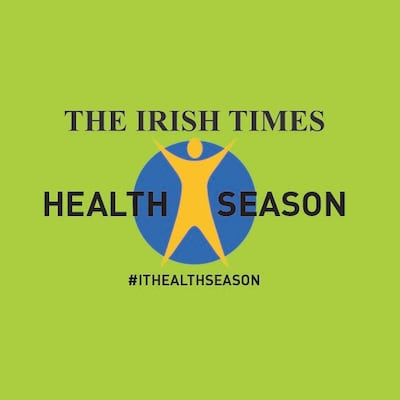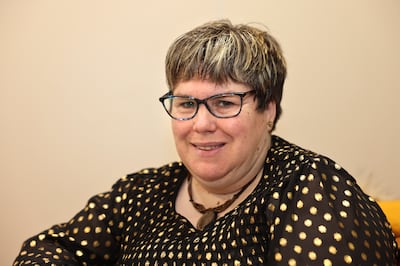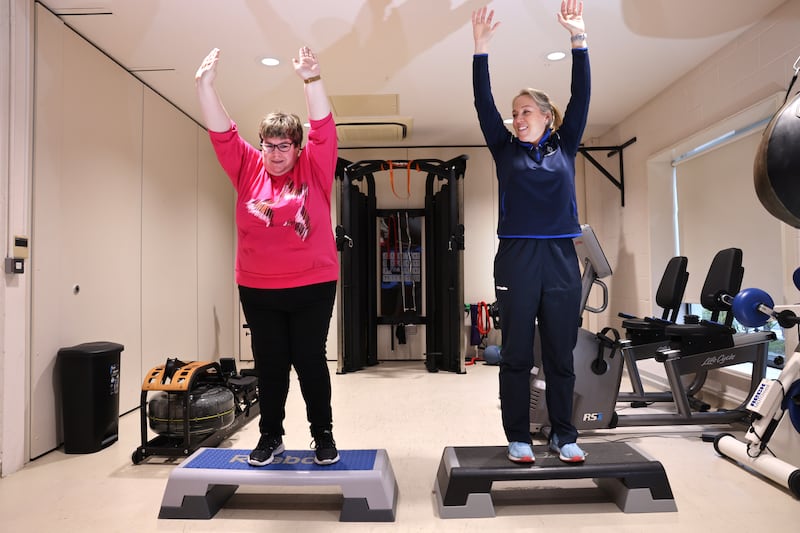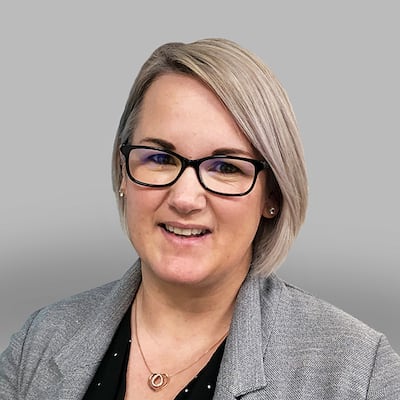
Lynn Conroy is an enthusiastic proponent of a new national programme designed to put more movement into the lives of users of disability day services.
The 50-year-old was involved in the piloting of the Active Healthy Me programme, which becomes available online from January 16th, and will be a co-leader in its delivery among fellow attendees at St Michael’s House in Dublin. The course focuses on the benefits of everyday physical activity, along with healthy eating, and is the result of a collaboration between the HSE and Cara Sport Inclusion Ireland, with feedback from people with disabilities.
When it comes to the joy of exercise, too often those with disabilities are left on the sidelines, as a survey co-ordinated by Cara among more than 200 people with disabilities shows. While more than 80 per cent of respondents agree physical activity is a priority, less than 20 per cent think it is accessible. More than 70 per cent believe organisations do not do enough to support people with disabilities to be physically active.
The worrying thing about these findings, says Niamh Daffy, chief executive of Cara, is that a survey in 2005 threw up similar results and indicated similar barriers. Up to this, Cara has worked mostly with the sports sector to ensure that people with disabilities have equal opportunities to lead an active and healthy lifestyle. But direct consultation has highlighted how, above all, people with disabilities want to be involved in day-to-day physical activity that the rest of us take for granted, from walking in local parks to cycling on greenways, swimming, gym sessions, dancing or an exercise class. Active Healthy Me is aimed at cultivating that everyday feeling of wellbeing and opportunities for moving, says Daffy.
READ MORE
The target audience is the 20,000 users of the 1,000-plus adult day services around the country, supported by a staff of more than 6,000. These services are attended by adults with intellectual disabilities, autism or complex physical disabilities. Daffy also sees the programme’s potential for use in special schools and older people’s residential care centres.
After a long gestation – and through the steep learning curve of communication in a pandemic – what was initially envisaged as an in-person course has emerged as a flexible, online resource. Suitable for sharing on an individual or group basis, the programme encourages more physical activity, not only within a day service but in the community, raising awareness of the opportunities that local sports partnerships offer.
Sitting in the St Michael’s House Leisure Centre on the Belcamp Road in Coolock with sport and leisure services manager Sarah Hewitt, Conroy says she loves exercise, nominating walking as her favourite activity. But golf, thanks to an initiative with Clontarf Golf Club, is one of the latest sports she has tried.

“We are in Special Olympics now with the golf,” says Conroy, who has competed in 10-pin bowling and badminton for Special Olympics. We’re talking in a former cinema room at the leisure centre that is being converted into an exercise room, next to the fully-accessible, 19m swimming pool.
Asked what she learned from taking part in the pilot of Active Healthy Me, she replies: “Don’t eat too much rubbish, like chocolate and sweets; keep them in small amounts, as a treat.” Her favourite parts included “the marching and the walking and the boxercise as well”. As to what behavioural changes she made, “I probably moved more – when the ads are on.” That, explains Hewitt, was the result of a TV ad-break challenge to get up and move.
Conroy, an avid soap opera fan, elaborates: “Doing a bit of exercise with your leg or your arm or whatever and wait for your programme to come back on again. Not to be sitting there for three or four hours.”
“It was a really good course,” says Hewitt, who steered the pilot in St Michael’s House. It covers information “to give people more ownership over their own health and to learn some of those important messages that are being pushed out nationally but often aren’t accessible”. There is a physical activity section in each module; first the theory is explained and then a practical session reinforces the learning, she says.

“It gets us moving,” says Conroy. She and Hewitt will be taking time this January to raise awareness of the programme among some of St Michael’s 150 units around Dublin city and county. They are also planning to deliver sessions online, in-person or in a hybrid format.
“All frontline staff should know it’s there,” says Hewitt. Conroy, who lives in Coolock with her father and attends a St Michael’s House service in the city centre three or four days a week, is a teacher of physical activity. “I do chair aerobics because I did a course with people with learning disabilities in Trinity College called P:Pals,” she says, referring to a six-week course designed to enable people with an intellectual disability to become leaders of physical activity in their community.
Sarah O’Brien, head of the HSE’s Healthy Eating and Active Living Programme, is hoping for “a very rapid uptake” of Active Healthy Me among day services. She reports “lots of positivity” in briefing meetings with managers. For services that might need additional support to run the programme, skills practice workshops are being offered to build staff confidence.
She envisages that staff and service users will become more aware of the importance of physical activity in terms of mental and social wellbeing, and more likely to integrate it into their planning and overall service design.
“Services vary and when people are looking at competing priorities, this might not always come to the fore. The programme helps put more of a focus on it and gives people a tangible way of making it real within their service” – rather than just an aspiration. “It’s not just about keeping people confined in their day services,” she says. “It puts a big focus on connecting people in the wider community.”

Cara engaged with 10 services within St Michael’s House and the Cope Foundation in Cork for the pilot, and values this building of connections between local sports partnerships and day centres. In one service, where participants enjoyed the aerobics and dance components of the pilot programme, this led the group to find out where they could do these activities in the community.
“One of the main barriers that continues to come up with people with disabilities is [lack of] awareness of what’s out there and where they can take part, what supports are available,” says Daffy. She believes this programme will help to increase knowledge and break down boundaries, through sports inclusion officers visiting services and linking more service users to coaches and facilities in the community.
She and O’Brien say services may be able to avail of grants offered by sports partnerships for equipment and programmes. “It’s by developing those relationships we will be able to enhance more opportunities within day services,” says Daffy.
There is a need to change the mindset, not only of day-service staff, families and carers, but of people with disabilities that “they too can be physically active”, she says. For many of today’s adults, their childhood experiences may have been negative in terms of physical activity and physical education.
Knowing that finding the time to invest in and deliver new activities can be difficult for services, Cara looked for commitment at management level for the programme. “It can’t just be driven by the staff who are probably being pulled in every direction to support individual needs,” says Daffy. Rather, it needs to be built in to the day-service schedule, and from that it will become part of the culture.
“People with disabilities experience enough barriers in life, in education, employment and healthcare,” she says. “When it comes to physical activity and sport, there are always options – you have to explore it from a positive sense, rather than say ‘that’s not possible’.”
There’s no lack of positivity for the new venture from Lynn Conroy. When Cara was designing the e-learning modules for Active Healthy Me, she was among a group of service users who were paid to work with Hewitt in giving feedback on details that could make it better. For example, the slides were changing too fast.
“They were flying through it, weren’t they,” she says. More easy-read documents and greater use of pictures were also introduced on foot of the service users’ experiences. “Some people can read and some people can only read by pictures,” she says.
Now, as the end result of hard work and collaboration, the Active Healthy Me programme is ready to fly.













